How do you spend your time at KMD?
What are your dreams for the future?
An honest conversation with five students.
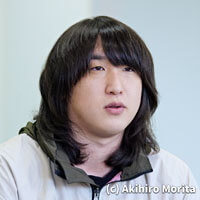
Yoh Hiramatsu
Korea
First-year doctoral student
Real project: CREATO!
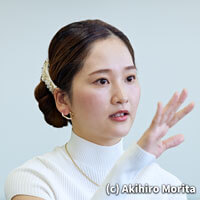
Emiko Kamiyama
Japan
Second-year master’s student
Real project: Network Media
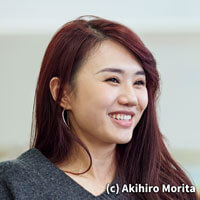
Ximing “Elizabeth” Shen
China
Second-year doctoral student
Real project: Embodied Media
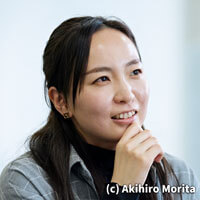
Haruka Onoda
Japan
Second-year master’s student
Real project: Embodied Media
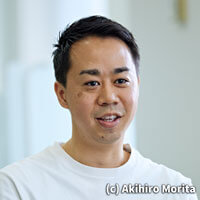
Masaya Shimizu
Japan
First-year master’s student
Real project: Embodied Media
Please tell us about your backgrounds and what you hoped to achieve when applying for KMD.
Yoh: I was active as an acupuncturist after graduating from a medical university. Outside of work, a friend introduced me to e-sports competitions which left a big impression on me. This got me thinking that perhaps I could do something with my expertise to get involved with e-sports, and after studying physical care and management of athletes in graduate school I decided to enroll in KMD to further advance my research.
Emiko: I have been working as a stage actor for about 10 years, and as I continued to perform, I grew more interested in exploring the nature of communication in performing arts. I enrolled at KMD because I thought that by doing so I would be able to acquire fresh perspectives and novel approaches to communication by studying alongside people from different nationalities and diverse backgrounds.
Elizabeth: I studied economics at university in England. I didn’t know what I wanted to do or what I was even capable of after graduating. I was, however, interested in MedTech, or the use of IoT and other technologies in medicine. I came across KMD while looking for a school to pursue this field.
Haruka: I graduated from an art school and was working as a designer at a company that produces miniature models. I grew frustrated when I hit a roadblock due to my own lack of knowledge while planning an exhibition involving AR and other cutting-edge technologies. When I sought to turn this frustration into an opportunity to learn, I came across and was blown away by the works of Tetsuya Mizuguchi, who creates next-generation synthetic musical experiences. When I learned that Mr. Mizuguchi is a project professor at KMD, I decided to enroll.
Masaya: I first became interested in enrolling during the COVID-19 pandemic while working remotely from home as a designer for an architectural firm. The situation inspired me to revisit the role that architecture ought to play in society. While revisiting that topic I came across the works of Tetsuya Mizuguchi, which ultimately fueled my desire to design architecture that has a greater impact on people, as well as explore the intersection of architecture and media design and the expansion of the field as a whole.
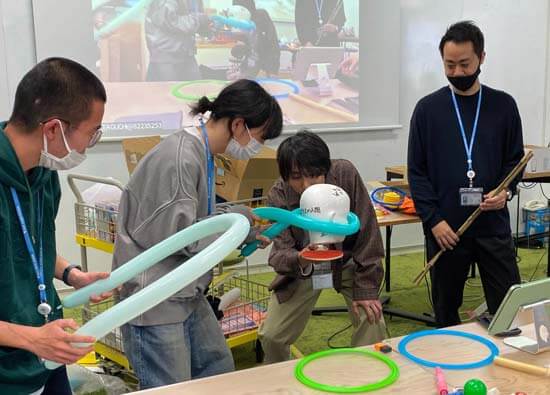
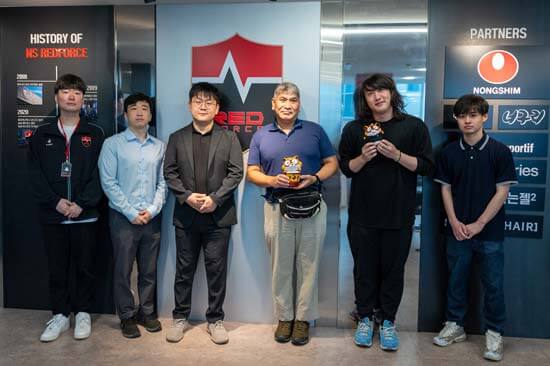
Please tell us about your day-to-day activities and the research you conduct as part of your Real Projects.
Yoh: I am currently balancing working as a practitioner at a university-affiliated acupuncture clinic and a lecturer at an e-sports vocational school with my research on healthcare management in e-sports. Academic research on the field of e-sports is still in its infancy, so I am researching comprehensive management models with the goal of contributing to the healthy development of the industry.
Emiko: In addition to my research, I also facilitate programs streamed online as well as contribute essays to newspapers. I am currently seeking to establish a methodology for streamlining communication in performance instruction that anyone can put into practice while exploring methods of instruction using digital technologies.
Elizabeth: I am currently a 3rd year PhD student, so my days are filled with writing reports and my thesis. I usually spend most of my time in the Cybernetic Being Lab, KMD’s research base in Takeshiba, where I conduct research to support Dementia Eyes, a program that uses AR technology to simulate the visual difficulties experienced by dementia patients and those with similar conditions.
Haruka: I am also in the Takeshiba lab from morning to evening on weekdays, working on experiments, papers, and research reports. I am researching the use of VR to simulate changes in bodily perception—technology that makes one feel as if their body has become smaller or larger. I hope to find practical applications for this type of technology that allows users to shift their perspective in next-generation entertainment.
Masaya: I split my time between working in the Hiyoshi campus library, conducting research at the Takeshiba lab, and advancing my architectural design work. I want to try to add value to architectural spaces through designs that seamlessly integrate technology to stimulate our senses and gently encourage behavioral change. In a broader sense, I hope to expand the profession of architectural design itself.
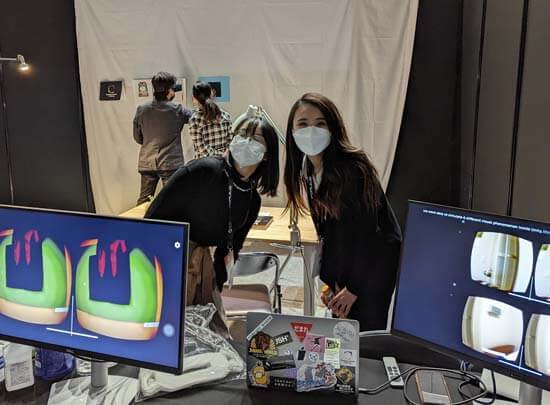
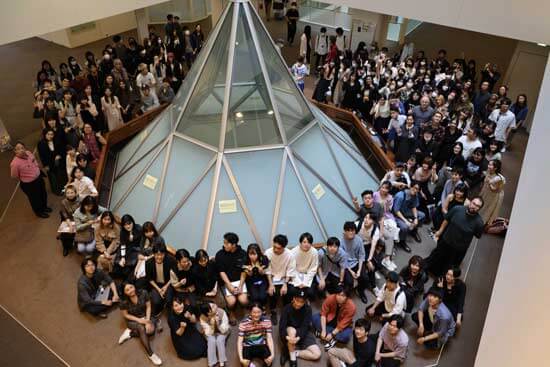
What kind of place is KMD to you?
Yoh: It’s a place that encourages you to do what you want to do. For example, I have no knowledge of engineering, but here I have classmates and project members from various areas of expertise who will do their best to support me and, if our goals are compatible, we can work together on research. The teachers encourage us to collaborate with outside companies when necessary, which is a great way to keep advancing your own research.
Emiko: I completely agree. The Real Project I am a part of deals mainly with the Internet, which is an area completely outside of my expertise. Nonetheless, my instructors, peers and more senior classmates lent their skills for the areas I lacked. I am happy to be of service to everyone in my area of expertise, even if only in a small way, and I feel very comfortable in an environment where we can work together to improve each other’s skills.
Elizabeth: There are so many interesting Real Projects here that some people change projects depending on their objectives. For me, I feel that KMD is a place that understands my strengths even when I do not, brings out my potential, and helps me grow further.
Haruka: It is truly a diverse place, with a wide variety of nationalities, backgrounds, and values. I find it a very interesting experience to be able to understand what kind of person I am, relatively speaking, as I discuss things with this diverse set of people.
Masaya: I studied architecture at SFC’s undergraduate and graduate schools, and inevitably spent a lot of time with my peers who were researching the same thing. I find KMD to be a very interesting environment because I am able to take classes and collaborate closely with people who have ideas and goals that are a complete 180 degrees different from my own.
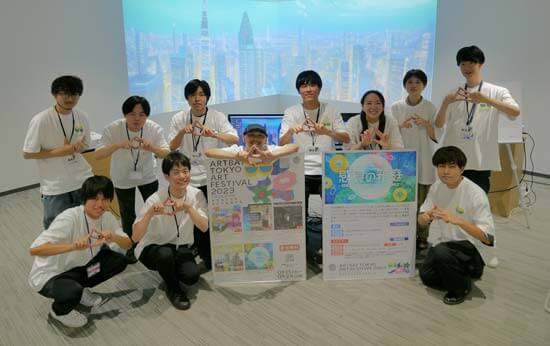
Finally, do you have a message for those who are considering enrolling in KMD?
Yoh: Once you enter KMD, be prepared for your idea of common sense and what is “normal” to be thrown completely out of the window [laughs]. Considering risks, delivering appropriate interventions to patients, and maximizing results under various constraints was the norm for me in the medical world. But that was only one facet of medical care, and encountering a group of people with such diverse perspectives upends conventional wisdom. KMD is full of people who enjoy that kind of paradigm shift. That, for me, is the most valuable element of my learning at KMD.
Emiko: KMD also made me realize that there are different sides to what I believed to be “right.” It also taught me that I can accomplish my goals in ways that I never even imagined. If you have a clearly defined sense of purpose or issue you want to tackle, I would recommend that you enroll in the program after you have gained experience in the working world, as I believe that your possibilities will expand after enrollment.
Elizabeth: Contrary to others, I enrolled at KMD to find out what I am capable of.And as I participated in various projects, I discovered what I could do.If this was possible for me, it should be for you too.I encourage prospective students to think of KMD as a place where you can accomplish great projects.
Haruka: Every day brings a new discovery. At KMD, there are many opportunities to express your thoughts and listen to others, so I would like you to actively approach various people and try different things once you enter the school. I am confident that you will find student life to be fulfilling.
Masaya: I have only been at KMD for a short time, but the classes and projects at KMD are good training for noticing social issues. If we can successfully connect our past research and working experience with the new questions we have found here, I believe we will be able to generate new perspectives for society. However, there are so many interesting projects that I’m still debating which one to choose… [laughs].
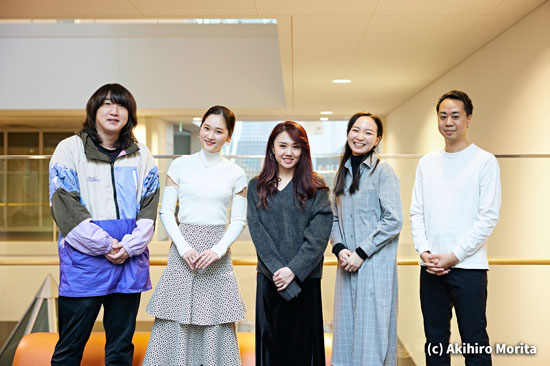
(This interview was held in March 2024.)
How do you spend your time at KMD?
What are your dreams for the future?
An honest conversation with seven students.
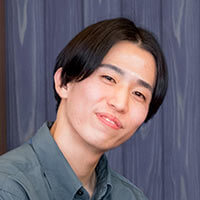
Hiromasa Ogawa
Japan
Second-year master’s student
Real Project: Embodied Media
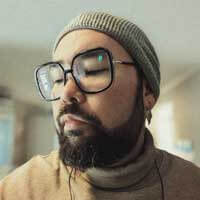
Lucas Ogasawara De Oliveira
Brazil
Second-year master’s student
Real Project: Embodied Media
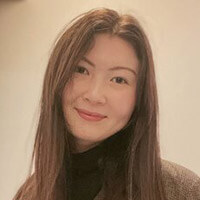
Annika Kondo
Denmark
Second-year master’s student
Real project: PLAY
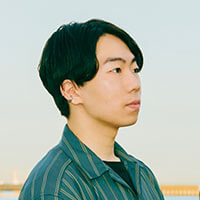
Yasutomo Yamaguchi
Japan
Second-year master’s student
Real Project: Future Crafts
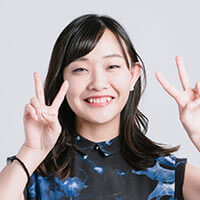
Nao Ou
Japan
Second-year master’s student
Real Project: Embodied Media
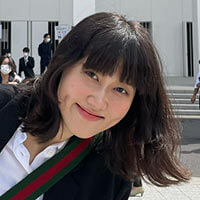
Xin Wan
China
Second-year master’s student
Real Project: Global Education
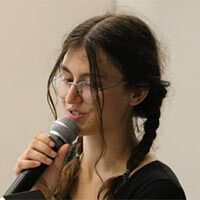
Ewa Szyszka
Poland
Second-year master’s student
Real Project: Geist
Tell us why you enrolled at KMD and about the project you’re working on right now.
Hiromasa: I studied engineering at a Japanese college of technology (KOSEN). I first learned about KMD from my classmates and teachers while I was participating in a student venture project and struggling to decide whether to start working full time or continue my education. I wanted to expand my understanding of design and management in addition to my knowledge of engineering. For my role in the Embodied Media project, I am combining my personal background in street dance and engineering to develop a device that can enable anyone, even beginners, to experience the excitement of dance.
Nao: After graduating from college, I began working in IT. While working at my company, I was impressed by their proactive efforts to promote accessibility. I decided to enroll at KMD because I wanted to use technology to contribute to solving problems. In the Embodied Media project, I am conducting research on how haptic technology can be used to engage with the human psyche.
Xin: While I was a student in the Keio University Faculty of Economics, I met students from the Graduate School of Media Design and heard about their projects at the KMD forum. They seemed really interesting, so I decided to enroll. At first, I didn’t have a clear vision of what I wanted to do for my research, but as I participated in my KMD Real Project, my interest in education deepened. I am currently researching education related to food and sustainability for the Global Education project.
Lucas: After I graduated from the Arts Institute at the State University of Campinas (Unicamp), I started working in the film industry producing both fictional works and documentaries. For my next step, I wanted to explore possibilities in fields outside of the entertainment industry and so I came to KMD on a scholarship as a member of the Japanese-Brazilian community. For the Embodied Media Lab, I am investigating intersectionality on human–computer interaction (HCI) combining arts, sociology studies, robotics and haptics.
Annika: I am originally from Denmark and studied Media Design at a university there. However, I had always wanted to study in Japan, so after I graduated, I enrolled at KMD to continue my studies. For the PLAY project, I am collaborating with telecommunications companies to research our sense of smell.
Yasutomo: While I majored in Design in college, I wasn’t sure what I wanted to do after graduation. I had a friend studying at KMD at the time and they told me about their experiences. I wanted to learn more about design theory, business, and management strategy, so it seemed like a perfect fit. For the Future Crafts project, I am using my background living in Hokkaido to conduct machine learning and other research on how to provide novel learning opportunities for the indigenous Ainu people of the area.
Ewa: I’ve always been very interested in Asian cultures. I thought of Japan as being especially technologically advanced, so I decided that I wanted to study at a Japanese university for grad school. From the options I was looking at, KMD had multiple intriguing research themes and opportunities, as well as an open learning atmosphere that I found appealing. I am researching the development of a haptic diving suit for the Geist project. The suit would use a diver’s sense of touch to communicate information and allow them to navigate underwater more safely.
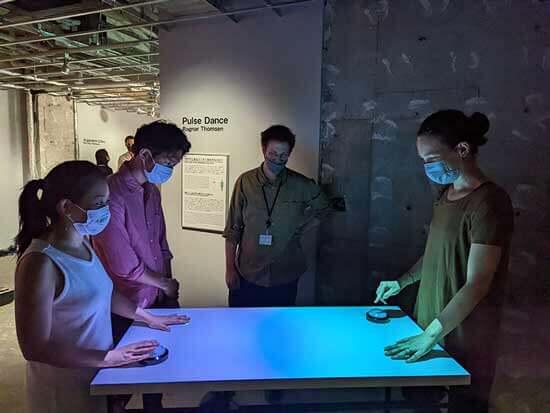
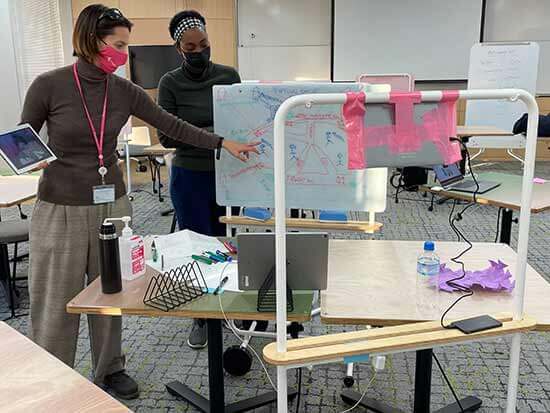
What is typical life like as a KMD student?
Annika: My first semester was completely online, so it was hard to get used to it, but after the next semester started there were more opportunities to go to campus. My normal life involves working as a student assistant in the Project Room where I can spend lots of time talking to other project members and general students.
Ewa: I also had few interactions with other students at first due to student conduct restrictions. As the number of in-person classes increased, though, I was able to join the judo and powerlifting clubs and make lots of friends. Now, I go to campus four times a week. On my days off, I go out or work at my part-time job.
Yasutomo: Once we entered 2022, there were finally more opportunities to try things off-campus, give presentations at academic conferences, and exhibit some of the progress I’ve made on my project research. Other than my research activities, I work as a graphic designer and take requests within KMD to practice my skills.
Hiromasa: For the most part, I spend my time at the Embodied Media lab in Takeshiba. Outside of school, I work as the CEO of a student venture. I work with other members that I met back during my time in technical college to develop apps and do sales and merchandising.
Nao: I like to focus on my research, so I am using money that I saved up from my old job in order to give it my single-minded attention.
Xin: Right now, I am mostly doing fieldwork, workshops, or other activities, so I don’t make it to campus very often. I would say that I am enjoying my student experience to the fullest, though, since I get to spend time eating out and going to theme parks with friends.
Lucas: I spend most of my time in the KMD Project Room. The room functions as more than just a research space, so I get to hang out with other project members and my other friends. Off campus, I am interested in gastronomy and trying new types of food.
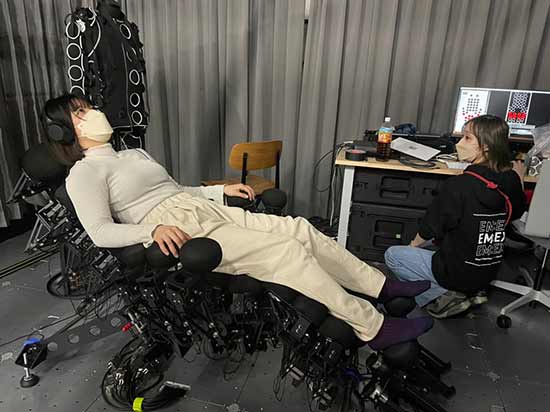
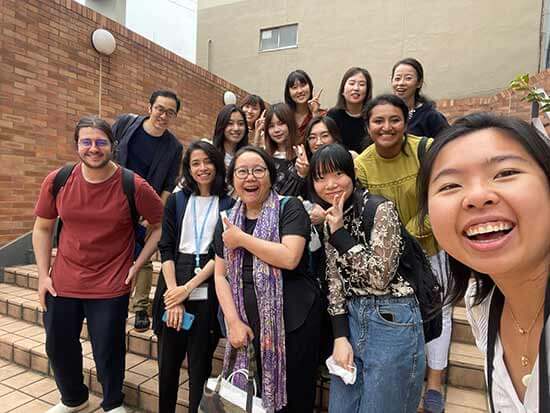
Are there any events or programs at KMD that have been particularly impressive?
Hiromasa: First-year master’s students in Embodied Media participate every Spring Semester in the International Collegiate Virtual Reality Contest (IVRC). We had to create and submit content for consideration between April and December. I was thrilled because our year’s team was the first to win the competition from KMD.
Nao: I was on the same team. I had little experience in monozukuri, the Japanese way of “making things,” but through the help of my upperclassmen and the experience in general, I was able to get closer to a variety of people and learn communication skills that wouldn’t be used in regular classes.
Lucas: I got to participate in Embodied Media’s annual “Recombinant” exhibition. The exhibition has live performance and art installations. I used my skills as a film producer to act as one of the organizers for the entire event. It was an invaluable experience to get feedback from the attendees.
What advice do you have for people thinking about applying to KMD?
Yasutomo: I think that KMD is a place where people can accomplish anything they want to do. The faculty is very supportive, so it is a wonderful environment for anyone wanting to pursue their passion.
Hiromasa: I think that KMD is a great fit for people who have a clear vision of what they want. When those types of people enroll, their individual personalities have a way of creating more and more new and exciting things from interacting with each other.
Lucas: In some ways, I think that KMD is a relaxing space. Because students are given so much freedom, there’s a chance for you to examine yourself and really take the time to learn from other people around you.
Annika: I think that it’s important that students are open-minded and like to take on challenges. Classes are important, but you can learn the most from communicating with other students. My hope would be for the applicant to take advantage of this environment and draw inspiration from multiple angles.
Xin:I feel the same way. If you’re interested in something, it’s important to try talking to your upperclassmen or other people around you.
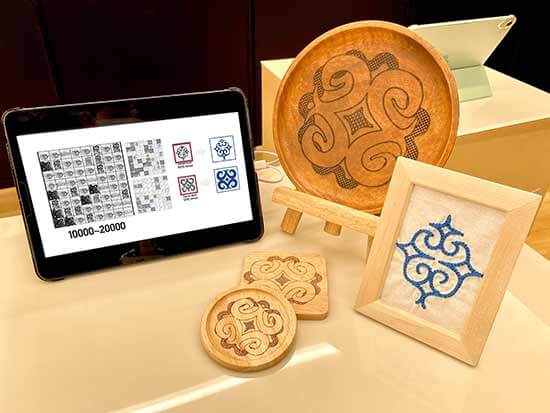
What are your dreams for the future?
Hiromasa: I have made so many connections here at KMD which I have incorporated into my essence in new ways. I sense incredible possibilities lie in working together with my colleagues and friends, so I hope to continue doing monozukuri with a diverse variety of individuals moving forward.
Yasutomo: After graduation, I want to work in design. Eventually, I would like to take those skills I get from that job to return to Hokkaido and create spaces and environments where people can practice design and monozukuri.
Nao: I want to continue to contribute to the well-being of my family and friends, both in my work and in my hobbies.
Annika: I hope to get a job in a multicultural and diverse work environment where design and monozukuri play a key role in my life.
Xin: The KMD Real Project has instilled in me an interest in education, so I hope to further research this area and eventually find a position where I can be involved in the education sector.
Lucas: No matter what I end up doing in the future, I will always want to prioritize equality and how I can help make the world a better place.
Ewa: I am currently hoping to enter a PhD program. After that, I think I would like to work in software development or R&D. My ultimate goal is to start my own company.
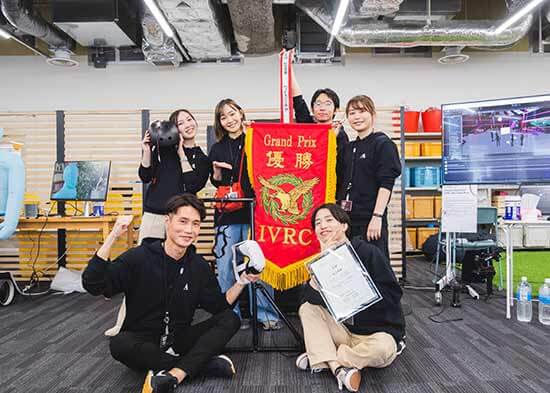
(This interview was held in March 2023.)
KMD Student Roundtable 2022:
How do you spend your time at KMD?
What are your dreams for the future?
Five students speak their mind.
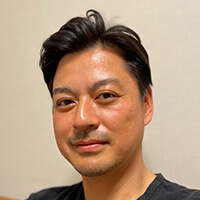
Hideyuki Watanabe
Japan
Second-year master’s student
Real Project: Creative Industry
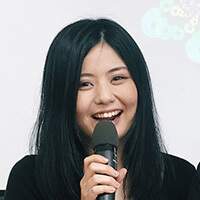
Nanako Shimokawa (Maki)
Japan
Second-year master’s student
Real Project: Policy Project
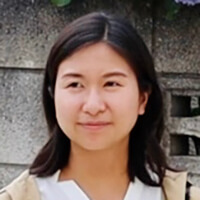
Sae Moriyama
Japan
Second-year master’s student
Real project: ITOMA

Misaki Kikuchi
Japan
First-year master’s student
Real Project: Global Education

Takahiro Fujimoto (Taka)
Japan
Second-year master’s student
Real Project: Network Media
Why did you enroll at KMD?
Hideyuki: While I currently work for an internationally-owned private corporation, when I started thinking about branching out, I became aware of KMD. I chose the School’s “Creative Industry” Real Project because its topics overlap with areas I want to work on in the future and the program seeks to address problems using new approaches.
Maki: After I became a university student, my mother and I started running a vegan restaurant. In the midst of trial and error motivated by the desire that a plant-based diet might someday be regarded as an accessible option within people’s daily food choices, I found myself wanting to incorporate other senses into the experience. That is when I heard about KMD. The school’s environment is supportive of students following their passions and I have loved furthering my research since I enrolled.
Sae: While working for seven years in a white-collar job, I continued to use my spare time in order to plan and organize events. As I did this, I became especially interested in spatial design and learned about KMD. I have been able to pursue a variety of research oriented by how “things” and “spaces” can facilitate people’s experiences as part of the Real Project “ITOMA.”
Misaki: I studied civil engineering as an undergraduate and planned to go to Graduate School for structural design. As I reconsidered what I wanted to do in the future, however, I realized that I wanted to make things that bring people together. That was what made me decide to focus again on design and to study at KMD.
Taka: For my graduation thesis I digitized the works of world-famous artists and experimented to see if people would still recognize the artists’ touch when they were broken down and scrambled into new forms. My supervising professor recommended either pursuing a master’s degree at an art school or studying at KMD. I chose the latter.
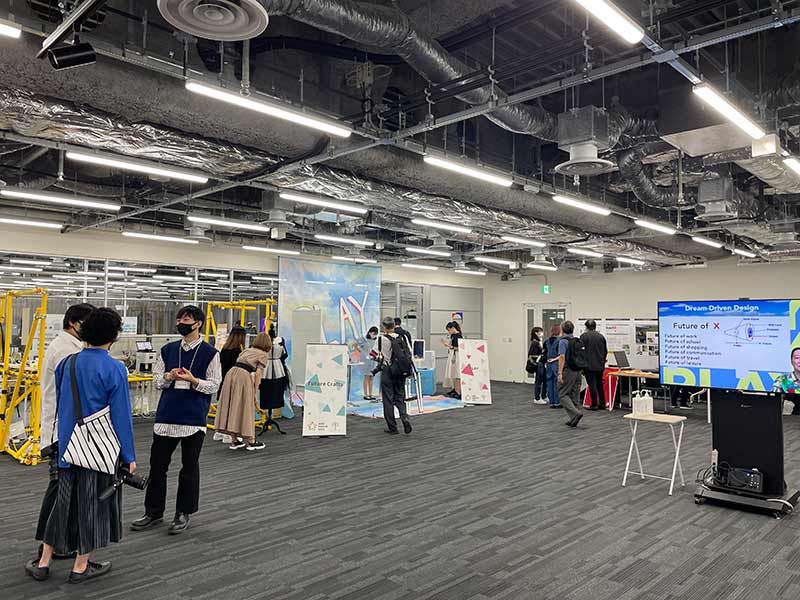
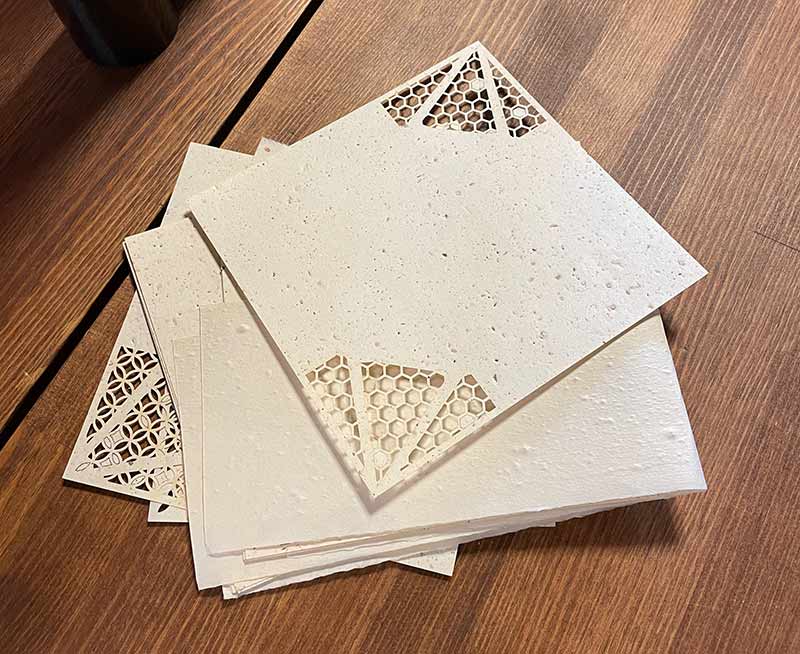
Please tell us about your current projects.
Hideyuki: The “Creative Industry” Real Project collaborates with various sites throughout Japan. I am currently participating in a project based in Sabae, a city in Fukui Prefecture. I am researching new approaches to local traditional crafts while also working in a “fab lab” (digital fabrication laboratory), that uses technology such as 3D printers and laser cutters in monozukuri, or Japanese-style manufacturing processes. For example, I work on things like interpreting new ways of using lacquer, and using traditional techniques to develop products that can be incorporated into modern life.
Futa: In the run up to academic conferences we sometimes find ourselves burning the midnight oil for development. I am rather busy at this moment in time, as the company I started will soon launch a new service. I am also involved in a musical group and am doing all these while linking them together. This is a way of life in which no two days are the same.
Maki: I am conducting research under the “Policy Project” based on the concept of, “increasing vegan eateries, vegan products, and opportunities to think consciously about food,” to contribute to its popularization. For example, while vegan meat has been given attention as a possible solution to environmental issues and food crises, in an effort to include non-vegans, we are creating products that people who enjoy meat will also find appetizing.
Misaki: I am also interested in shokuiku (dietary education) and, for my work in “Global Education,” I did fieldwork that involved taking my elementary school-aged cousin to a tea farm in Suzuka, a city in Mie Prefecture. As we picked and steamed the tea leaves and learned about the other processes used at the farm we got to learn how to prepare the tea by ourselves. My cousin, who used to avoid drinking tea, has now grown to love it. This experience has helped me pursue my research into product development and spatial design as they relate to nutrition and education.
Sae: For my “ITOMA” Real Project research, I have been working on issues related to soundscapes. The project is focused on creating a service where users can listen to audio guides while walking around a city and learn about attractions and places of interest. For my research, I accompany professional tour guides to observe and investigate how they work and make use of the information to use in the service’s prototype.
Taka: To tell you the truth, I am terrible about getting up in the morning. I decided to pursue research in sleep science in the hope that it might also help me wake up feeling somewhat more rested. I created an alarm system that suppresses melatonin secretion by using blue light, which is known for affecting human sleep cycles. Using this system, I am acquiring data such as heart rate, room brightness, and temperature to study the correlation between how one feels when waking up and the environment.
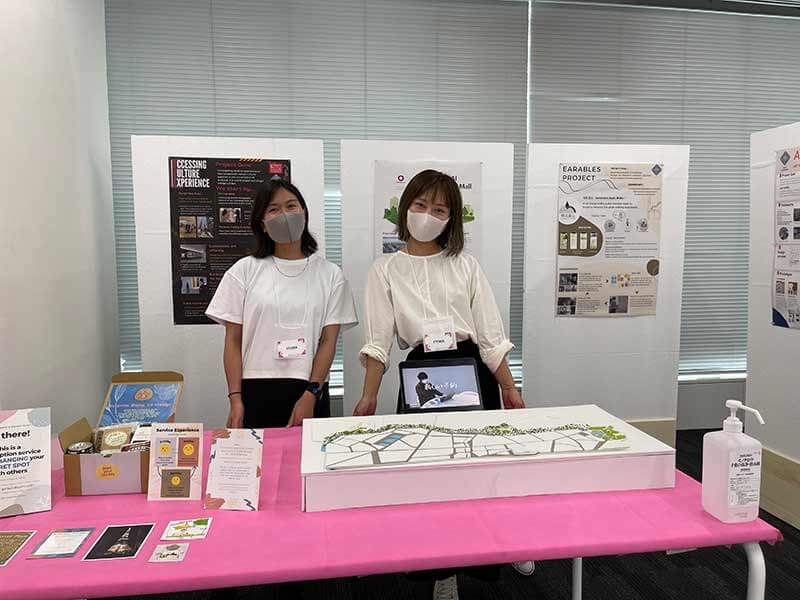
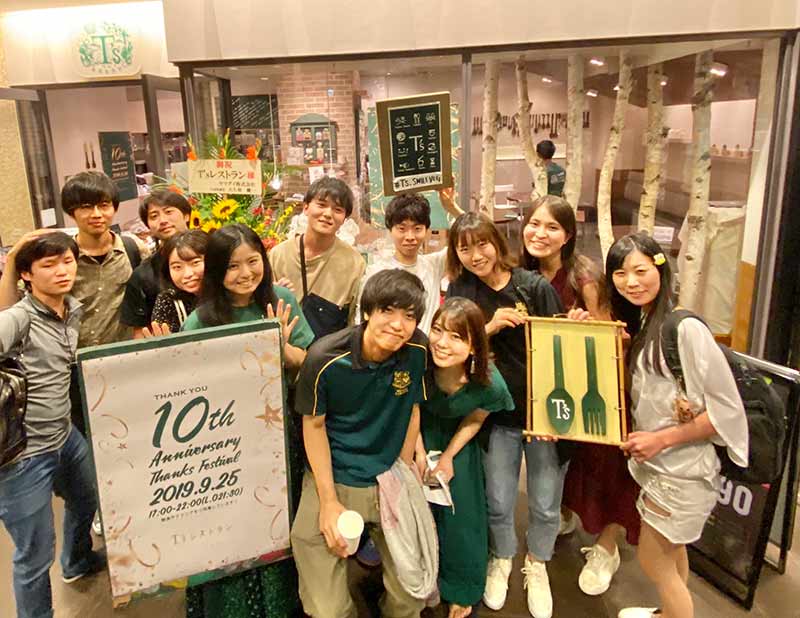
How has your life at school here been throughout the pandemic?
Taka: When thinking about a research theme I think it’s important to find people in one’s surroundings and get their impressions and perspectives. During the pandemic though, there are fewer places to talk casually and compare notes about our research, so that’s been difficult to work through. Now that we have gradually gotten used to things we have made more opportunities to talk while also devising ways of interacting with each-other in our academic community.
Maki: My plan was to: “write a thesis on X topic, conduct Y experiments, and collect survey responses within Z amount of time to coincide with product development.” However, with the extensions of the government’s declaration of a state of emergency, those plans kept getting delayed. It was definitely hard for me, since my product was not ready by the thesis submission deadline.
Sae: I joined KMD during the pandemic. While there were times when our hands were tied , now, as long as we submit an application, students can access the rooms and materials they require and use hybrid in-person/online systems to get work done. While there were times when our hands were tied, now, as long as we submit an application, students can access rooms and materials or use hybrid systems to get work done.
Maki: I work as a teaching assistant supporting guest professors during their lectures. One issue when classes were held in person, was the reluctance of students to ask questions. During the pandemic, though, after we introduced a live chat application, students began sending in plenty of questions for the online class. Oddly enough, communication has been revitalized in some ways.
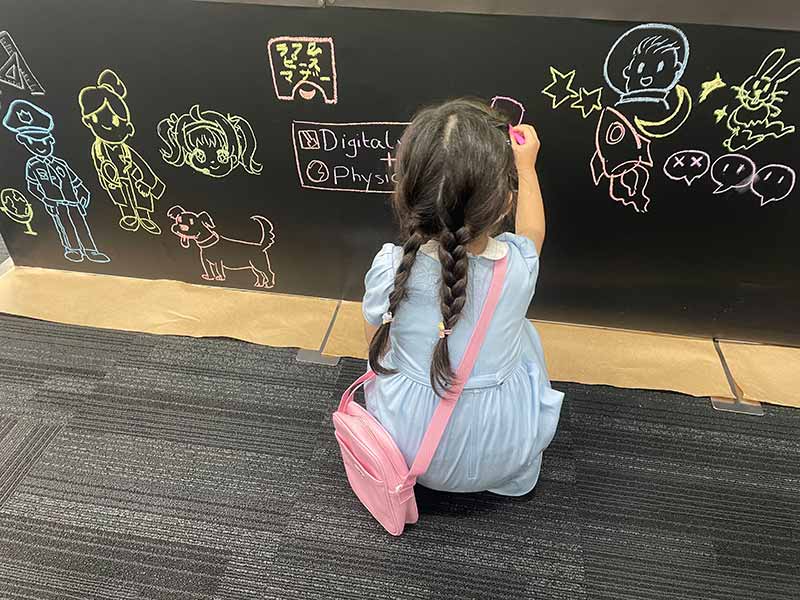
What would you say to those interested in KMD?
Hideyuki: KMD is full of people of diverse nationalities, ages, and backgrounds conducting research in a variety of fields. It’s a very supportive environment for research, so I highly recommend it to anyone considering enrolling.
Maki: It’s really easy to communicate at KMD and that there’s a culture where people support each other as they work towards their goals. I think that it’s the perfect place for people who have a clear idea of what they want to do or for those who are self-starters.
Sae: For me, I didn’t start out with a clear plan of what I wanted to do. But, after enrolling at KMD and seeing what other students were doing in their Real Projects, I was able to find a research topic that interested me. Meaning, as long as students are excited about trying something new, I think that they’ll be just fine.
Misaki: Even if you only have a vague idea of what you want to do, the people at KMD are always there to help out as you naturally figure out your path. As long as students have the drive and passion to “do something,” they are sure to discover lots of ways to enjoy themselves.
Taka: One of the most attractive features of KMD is its rich resources, including the expertise of instructors, faculty, and its wider network. Whenever you ask about anything, everyone is quick to share their insights or introduce you to someone with background knowledge. They also have the tools needed for easy and quick access to monozukuri and experiments. Whether you have already enrolled at KMD or not, I think it’s important to first find the resources around you so that you can decide what you want to do with them.
— Thank you very much.
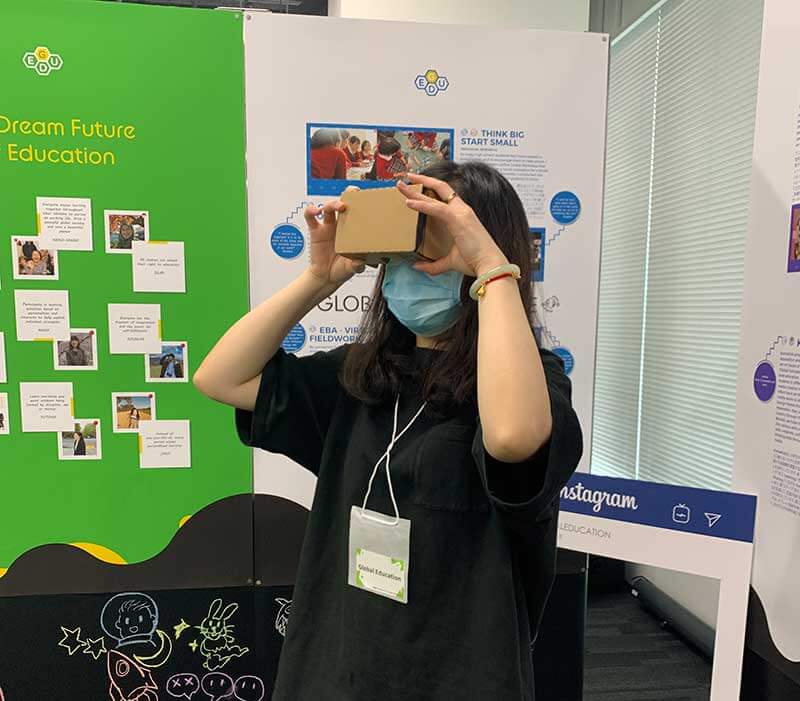
(This interview was held in July 2021.)
How do you spend your time at KMD?
What are your dreams for the future?
Six students speak from the heart.
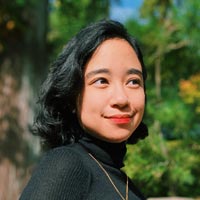
Darlene Hannah Jane Nolasco
Philippines
Second-year master’s student
Real project: SAMCARA
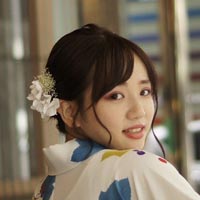
Hikari Yamano
Japan
Second-year master’s student
Real project: Network Media
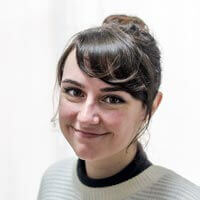
Stephanie Josee Marcotte Bourgeois
Canada
Second-year master’s student
Real project: PLAY: Entertainment Media Design
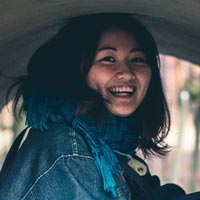
Reiya Horii
Japan
Second-year master’s student
Real project: Embodied Media
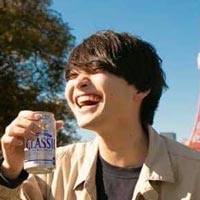
Futa Asada
Japan
Second-year master’s student
Real Project: Embodied Media
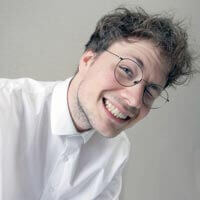
Ragnar Thomsen
Germany
Second-year master’s student
Real Project: Embodied Media
Why did you enroll at KMD?
Hikari: I studied American philosophy at university, but was looking to transition into research that would be useful both for contemporary challenges and into the future. I applied for KMD because it had a wide range of entry points, whatever one’s research field happens to have been at university.
Futa: I researched on supercomputers at a science college. As I was considering engaging with a field somewhat more closely aligned with users, my university professor told me that “Going to KMD will let you cover all the bases.”
Ragnar: I studied game design in Germany. After my undergraduate studies, I wanted to study interactive experiences from a broader perspective. Not many courses exist in Germany to study technologies from a design perspective, and my investigations led me to KMD in Japan.
Reiya: I enrolled with the idea of giving expression to the psychological aspect of us through means such as design and technology at KMD’s Embodied Media. In addition, since my research theme was intercultural communication, I felt that the environment at KMD, where half of those attending are international students, would complement my topic.
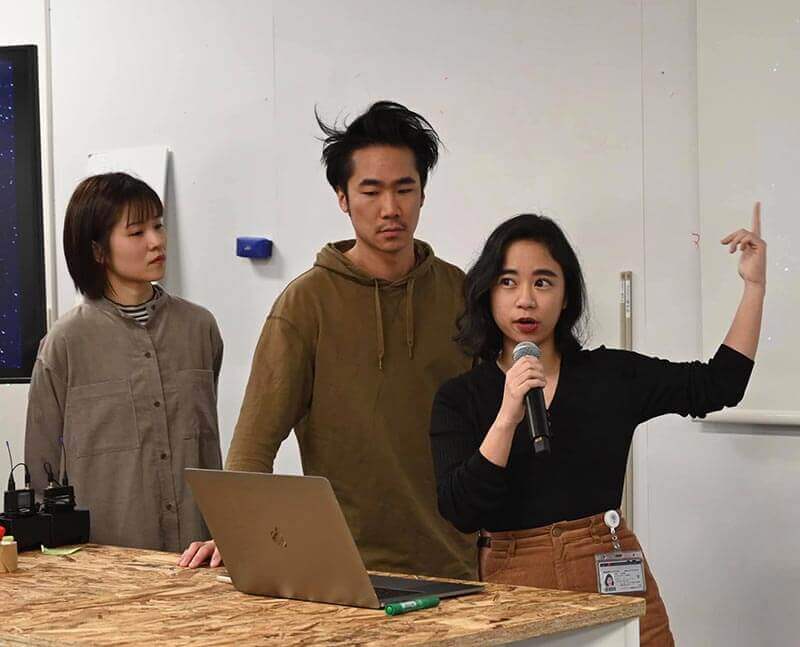
What is the typical life of a student at KMD?
Hikari: During the first year of my master’s studies I was kept busy with class assignments and Real Project activities. It was only into my second year that I was finally able to concentrate on my own research, and find time to catch up with reading. I am engaged in a regional revitalization project in my home prefecture of Fukui as an extracurricular activity.
Futa: In the run up to academic conferences we sometimes find ourselves burning the midnight oil for development. I am rather busy at this moment in time, as the company I started will soon launch a new service. I am also involved in a musical group and am doing all these while linking them together. This is a way of life in which no two days are the same.
Ragnar: I am involved in joint research with Japanese companies, and have many opportunities to get out and about, which is very fulfilling. I have lived in Japan for a year and a half, and I am inspired by new things every day in Tokyo and Yokohama. I feel a great sense of ease in the downtown area of Hiyoshi, where KMD is located, which is another part of the appeal.
Stephanie: Because of the coronavirus, I have not been able to spend time on campus this year like I did during my first semester at KMD. Besides studying off-campus, I also work from home as a freelance media artist, providing things such as graphic design and video editing for influencer clients.
Reiya: With the advent of coronavirus disease, everything from international academic conferences to classes and job hunting sessions has gone online. However, I try to look on the bright side of this situation, and am actively in contact with members of other projects as well as other working adults. There are fun things on the go, including the start of new projects arising from this.

Are there any events or programs at KMD that have been particularly impressive?
Futa: At Embodied Media we always take part in a student competition called the “International collegiate Virtual Reality Contest.” Through this competition we gain an understanding of the true nature of physical media, allowing us to learn about the struggles involved in developing in teams. It is a truly valuable experience to see the delight on the faces of people as they use the things that we have labored to produce.
Hannah: SAMCARA, the project to which I belong, also participates in many contests. The biggest of these is the “Biodesign Challenge”. This year, the work we submitted was featured in a book commemorating the 5th anniversary of the contest, which left a strong impression.
Hikari: I would have to say the KMD Forum. This is a great opportunity to bring in the research you are working on and have it seen by various people. It’s a good experience to be evaluated by outside parties, and I’m inspired by the research of students who you don’t generally hear from. Students play a central role in preparing for the event. It is a lot of hard work, with many tasks involving the management and logistic arrangements for the event, but it nevertheless allows for more in-depth mutual engagement across project boundaries.
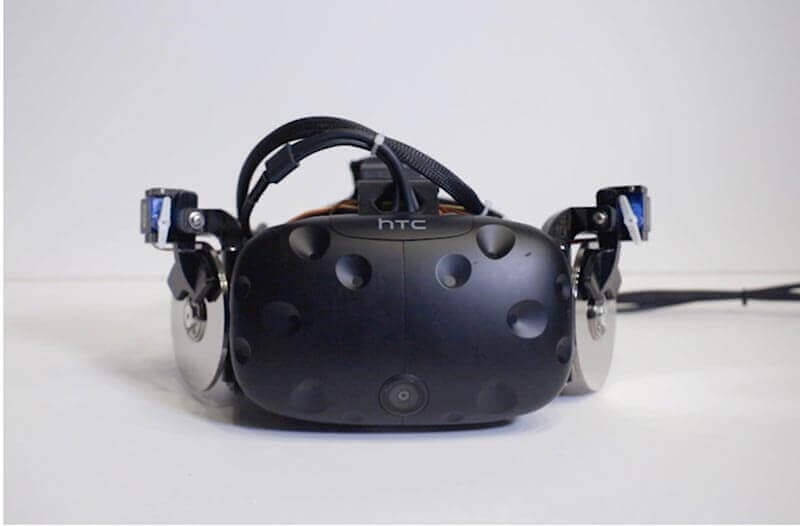
Do you have any issues communicating with the foreign students?
Stephanie: As I do not speak Japanese, I often find myself in the company of students who speak English. While I do not feel any inconvenience in terms of classes or daily life, I would like to build more networks, and thus hope to somewhat improve my spoken Japanese in the time left to me.
Ragnar: I would advise international students to study Japanese to make the most of the opportunity. KMD has systems in place for learning Japanese and there is a tutoring program with Japanese native speakers. If you are open-minded and curious, you will have the chance to learn about many different cultures. Everyone is friendly here so if you are proactive, KMD is a great place to make friends from all over the world.
Hannah: I am on good terms with some Japanese students but would like to interact with many more. There is a desire to understand one another even if your first language is not English. It is then just a question of putting this into action.
Reiya: I An environment for intercultural exchange is in place, and it is up to each person how they will use this. “Even if there may be a language barrier, you can communicate and even collaborate with those who share the same motivations during the Real Projects.”
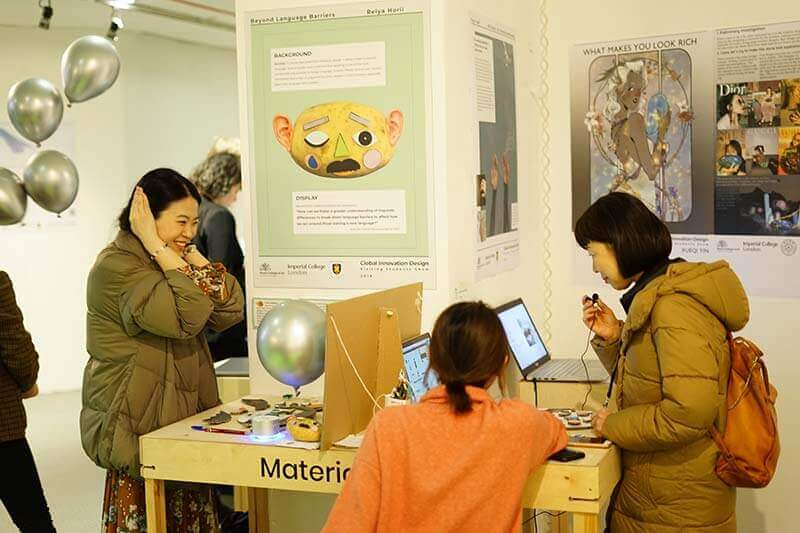
Could you give some advice to people thinking about applying to KMD?
Reiya: First, is to be flexible. As KMD allows many opportunities to collaborate with people from different backgrounds, it is important to be flexible in responding to various opinions and to extend a helping hand. Next, would be to know yourself. As this is an environment with a lot of information you won’t be able to exercise discernment if you don’t have a personal situating focus. I think you should make a special point of ownership and have the capacity to follow through on research till its conclusion.
Hannah: KMD is a place where you can take the initiative and focus on what you want to do. By waiting around to be given something you will ultimately find yourself unable to do anything.
Hikari: Talk to current students and teachers before enrolling. It may also be beneficial to create a mental image of “what you will do after you have enrolled.” There are various domains, activities, and types of student at KMD, and you can complete challenging research. However, if you don’t have a goal in mind you won’t be able to make the best of this environment.
Futa: A What strikes me as “what I should have done” would be to complete a preliminary survey on what kinds of students were engaged in what kind of research at KMD. Knowing where you should go and what you can do there in advance will go some way to ensuring a smooth journey after enrolling so you can use the two years effectively.
What are your dreams for the future?
Ragnar: I am researching how social robots can help people at remote locations to feel close to each other, and I hope that the technology I am developing can be put to use in the future.
Hannah: I I would like to go on to a doctoral program in Sustainability Science. I also wish to play a role in the promotion of sustainability by governments and private corporations. Specifically, I hope to turn my attention to Asia, including Japan.
Stephanie: I want to continue my activities as a media artist. If possible, my dream is to start a company in Japan to help social media influencers create content. Ideally, it could help Japanese influencers make content for an international market, and help international influencers make content that interests Japanese audiences.
Hikari: After graduating, I will find a job at an IT-related company. Also, since I have been engaged in activities themed on regional localities, I hope to continue activities which might contribute to local areas and my hometown even while working.
Futa: Firstly I would like to get the business of the company I started on track. I will interact via dialogues with the user which are as close as possible and create alongside them. This will be my aim both for my company and as an individual.
Reiya: My personal theme is “the elimination of boundaries,” and I think I will stick by this going forward. I hope to make it easier for people from overseas to live in Japan despite language barriers using the power of IT.
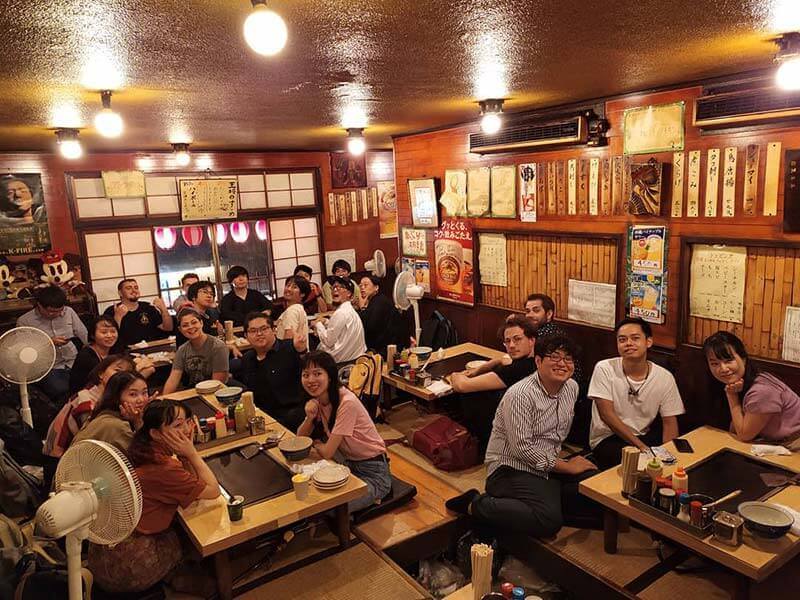
(This interview was held in November 2020)
How do you spend your time at KMD?
What are your dreams for the future?
Five students speak their mind.
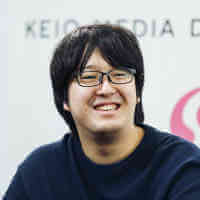
Daiya Kato
Japan
Third-year doctoral student
Real Project: Network Media
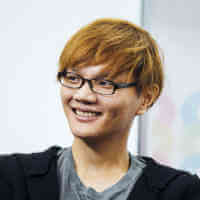
Hong-Yu Chang
Taiwan
Second-year master’s student
Real Project: OIKOS
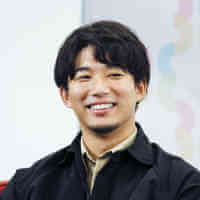
Junichi Nabeshima
Japan
Second-year master’s student
Real Project: Embodied Media
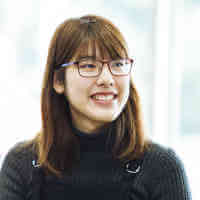
Rika Ikeda
Japan
Second-year master’s student
Real Project: Global Education
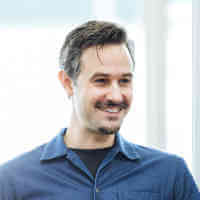
Charalampos (Harry) Krekoukiotis
Greece
Second-year master’s student
Real Project: Embodied Media
Why did you enroll at KMD?
Daiya: I chose KMD because I had wanted to research VR (virtual reality) and AR (augmented reality) at the time of admission. I have been at KMD for five years, originally doing my master’s here and now a Ph.D. Now I belong to the Network Media project, and I am currently doing research on the relationship between the media and the Internet.
Harry: Before coming to KMD, I studied architecture and film production in Greece and Germany, and worked professionally as a filmmaker. I was trying to find ways to combine my design background with media, so I decided to switch to media design. I wanted to do research in Japan and considered numerous universities, but I decided on KMD as it had a thriving international community and environment, and I felt I found what I was looking for in Embodied Media.
Junichi: While an undergrad, I studied business administration and statistics while being personally involved in activities to create new sports. Although I had a job lined up, I kept thinking that I wanted to immerse myself in making things, and it was then that an acquaintance introduced me to KMD.
Hong-Yu: I was working in Japan making toys and figurines. I was the opposite to Junichi and had always done jobs that involved making things, but I wanted to know more about the upper reaches of society and decided to go to a Japanese graduate school. I decided on KMD because the prospect of researching alongside people from different fields appealed to me.
Rika: While doing my bachelor’s, I did volunteer work supporting children who were, for one reason or another, unable to go to school or who had isolated themselves from others. I thought about what we could do to provide these children and young people with different educational experiences, and wanted to study the process of creating an enticing learning environment using the latest technology. My mentor while an undergraduate told me about KMD and as soon as I began looking into it, I knew that I wanted to study there.
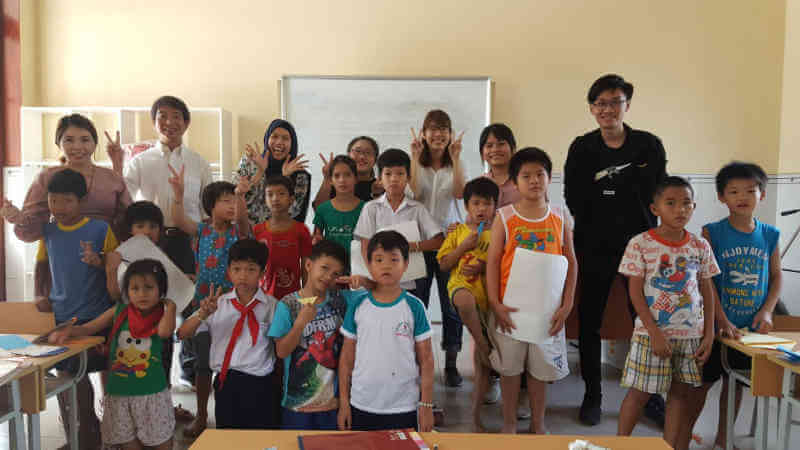
What is life usually like as a student?
Harry: I am researching kinetic interactive spaces, and I am now at the apex of the prototyping stage for my master’s thesis. I’m not just holed up in my research office though, and often go and see exhibitions for design and architecture as fieldwork for my degree. I’m also interested in traditional Japanese culture, and have joined groups for taiko (traditional Japanese drumming) and shamisen. It is hard to find enough time to sleep (laughs).
Junichi: I am doing research on making a robotic tail for humans. So, I am always at work in the Hacking Studio, the workshop of KMD. Besides that, outside the classroom, I help create new sports related to social welfare as well as playing handball for an adult recreational team.
Rika: Right now, I’m busy getting ready to put the educational program I have developed into practice at an orphanage in Vietnam as well as preparing for a conference presentation. Other than that, I’m always doing stuff with other members of my Real Project as well as having a part-time job keeping tabs on the equipment at the Media Studio of KMD.
Daiya: Because I am in the doctoral program, I receive a wage working as a researcher at KMD as well as teaching classes at other universities as an assistant or part-time lecturer. As far as I know, there are many people who have jobs or students who work like this in the doctoral program.
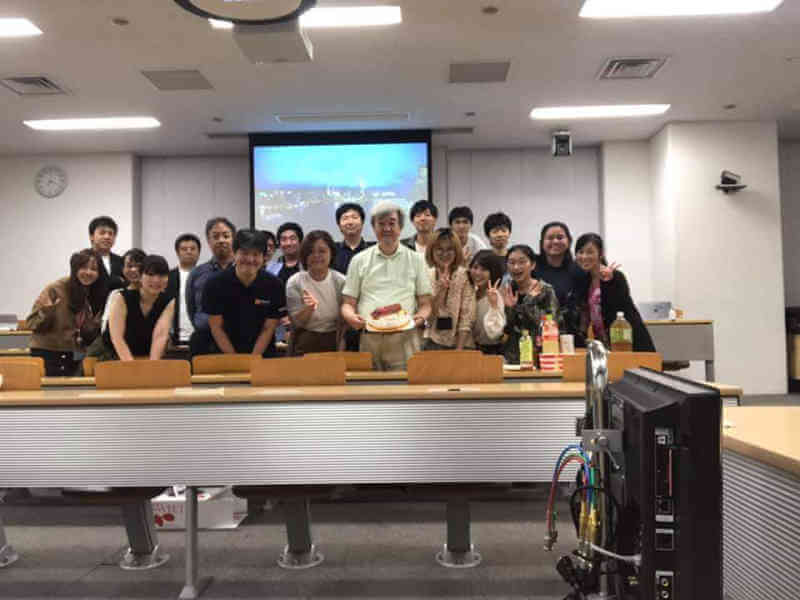
Are there any events or programs at KMD that have been particularly impressive?
Daiya: The annual KMD Forum where students present their research outcomes on the Real Projects is a fun event like nothing else. When I first participated, I was just overwhelmed at the opportunities we had to speak in English with the international students.
Rika: For me it is the “Joint Project Based Global Learning” program run by KMD and Stanford University. For two weeks in Japan and two weeks in the United States, myself and a group of students from KMD and Stanford created a new project while learning about real design thinking. It was really enjoyable.
Hong-Yu: As part of the student exchange program, “Global Innovation Design (GID),” I studied at the three locations of KMD in Yokohama, New York, and London. It was my first time to travel to Europe and the United States, and it was amazing to experience so many cultures firsthand.
Junichi: It wasn’t an event as such, but the first-year compulsory class “Innovation Pipeline” left a big impression on me. You learn about the four tracks of Design, Technology, Management, and Policy required at KMD, and at the end, you work in teams on the production of a prototype about which you also give a presentation. We had intense debates with students from completely different backgrounds, and I found it very thought-provoking.
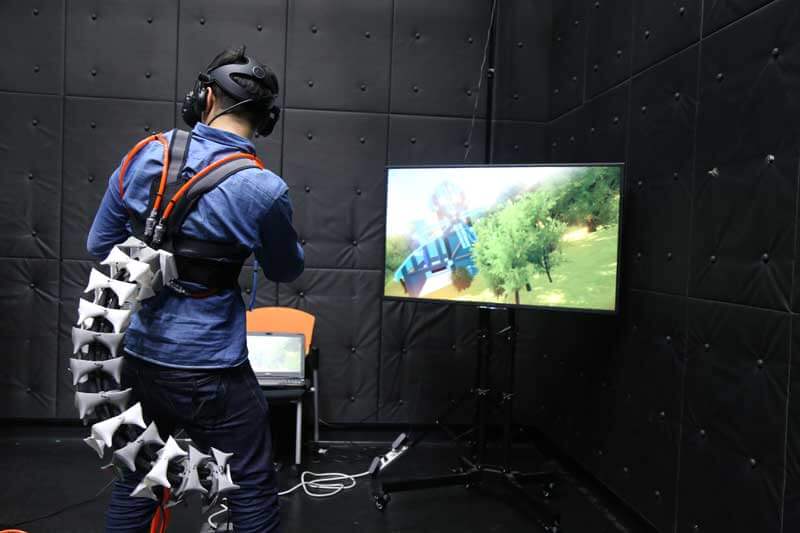
Do you have any issues communicating with the foreign students?
Rika: When I enrolled, I had no English skills whatsoever. What’s more, I belonged to a project where only English was spoken. While I was struggling to communicate though, I found that the people around me would kindly offer their help, and I think thanks to that, I was able to improve my English ability somewhat.
Daiya: You can get by with the bare minimum of English vocab and body language. You will naturally pick up words, and if there is a problem, I recommend all going together for a drink.
Harry: For presentations and research, you collaborate in multilingual teams. Japanese is difficult, but I’m studying it every day and am communicating more and more with my Japanese friends and fellow students in Japanese. With international students I communicate in English, German, and sometimes a bit of Spanish. Still, I have come to realize that one can’t forge a deep understanding with someone else without a grasp of their cultural background, and I am always trying my hardest to achieve that. Understanding the culture and learning the language go together, I think.
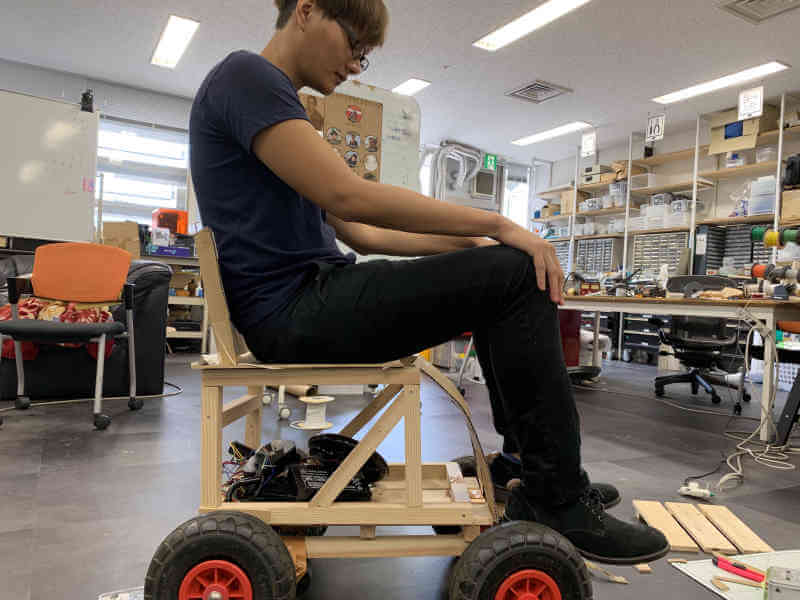
Could you give some advice to people thinking about applying to KMD?
Daiya: KMD is a school where you will immediately know whether or not you will get along with people, including faculty members. Before deciding to enroll, I think it is a good idea to carefully look into KMD, the faculty, and the content of the research.
Hong-Yu: It is important to have opportunities to hear from current students and to actually see the outcomes of the Real Projects at the KMD Forums, not just to rely on the website and information sessions.
Junichi: Because the two years go by so quickly after you enroll, you should have an image of what it is you want to do to ensure that you use your time at KMD meaningfully.
Rika: At KMD, there is meaning in using one of your strong points in collaboration with everyone else rather than trying to manage everything by yourself. People looking to enroll at KMD should focus on and polish their individual strengths.
Harry: After enrolling, you should try and get a good understanding of the environment and programs offered at KMD, and you should also make full use of all the studios and labs for your own projects. KMD gives you a lot of resources, make sure you make good use of them!
What are your dreams for the future?
Rika: I entered KMD with an interest in addressing truancy and educational inequality, and this feeling hasn’t changed. I want to support such children and young people here on out, and in the future I would like to setup an educational institution where people can learn how they want to.
Harry: I would like to work on interdisciplinary creative media projects that merge design with technology, specifically those that focus on making technology invisible; in other words, technology that cannot be physically seen, but is there, improving people’s lives. I am planning to continue working in research in Japan, as I am already enjoying being part of the vibrant research community here as well as the access to resources and opportunities it includes!
Junichi: When I enrolled, I never envisaged that, of all things, I would be making a robotic tail! It is really exciting being able to turn your ideas into a something tangible. While I will enter the workforce after graduating, I would like to continue to be involved in making things for my life’s work.
Daiya: One thing I thought after coming to KMD, is that although a great variety of people come together at the school, everyone really gets along. I like Japan, but Japanese organizations are very competitive. I would like to make Japan a little more receptive to learning about each other so that everyone can get along.
Hong-Yu: I have always done work making toys in Japan, but it is really an insular atmosphere. I don’t think that’s too different in other industries. Because I have had so many opportunities for collaborations and to learn at KMD, I would like to assist with bringing people together from various industries.
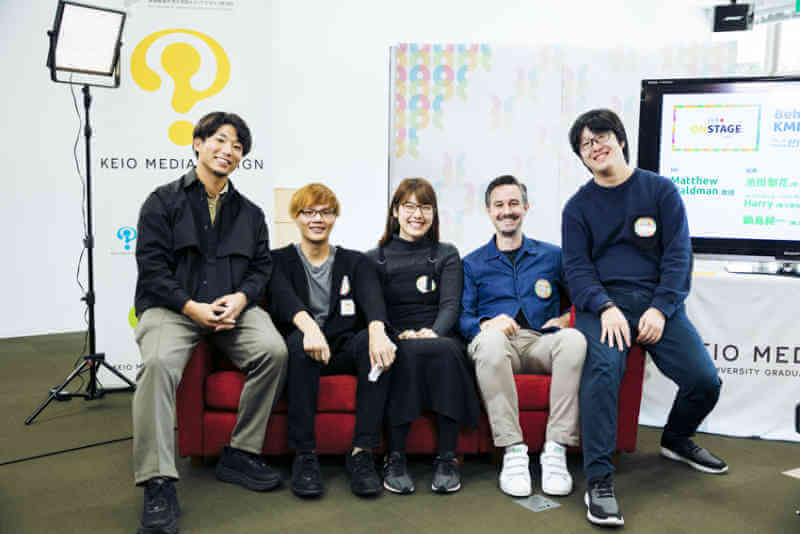
(This interview was held in November 2019)
How do you spend your days at KMD?
What are your dreams for the future?
Five students speak their mind.
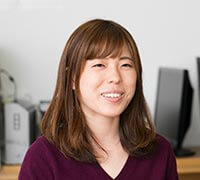
Yuri Osakabe
Japan
Second-year master’s student
Real Project: Policy Project (Digital Kids)
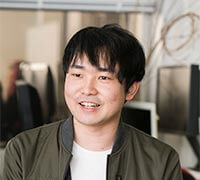
Haruki Nakamura
Japan
Second-year master’s student
Real Project: Embodied Media
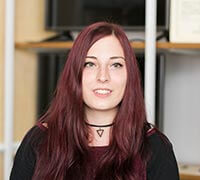
Stefanie Schaack
Germany
Second-year master’s student
Real Project: CREATO!
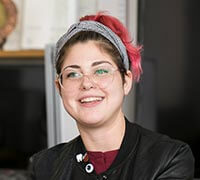
Elaine Czech
America
Second-year master’s student
Real Project: Embodied Media
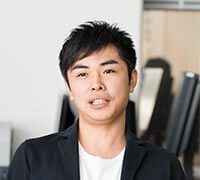
Ichika Komiya
Japan
First-year master’s student
Real Project: Policy Project (Digital Kids)
Please tell us the reason you decided to enroll at KMD.
Yuri: I felt I wanted to engage in activities to enhance the creativity of children while overseeing music at an education faculty during university. It was at this point that I encountered Professor Nanako Ishido’s book, which really impressed me. I entered KMD wanting to learn more about pioneering examples overseas and to get involved in creative workshops.
Haruki: I attended KMD for roughly one month on an internship during my fourth year of study at the National Institute of Technology, Tokyo College. I researched tactile sensation together with students at KMD and also attended an international conference. It was then that I felt that graduate school was for me and decided to enroll.
Stefanie: Since I was very young, I have really liked Japanese anime and visual-kei bands and I ended up studying the Japanese language. While on exchange, I attended Keio University for one year and had heard rumors from other international students that KMD was really interesting. The environment at the school, where people in a variety of fields including business, design, and engineering are brought together, was also very attractive. I originally had an interest in design and felt that I could complement this with my passion for the Japanese language at KMD.
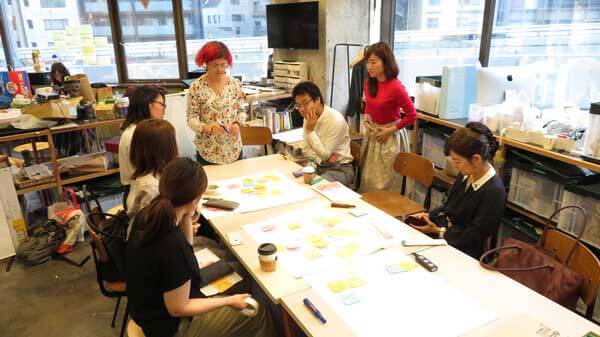
What kind of research are you doing at KMD?
Elaine: I am researching positive aging, which looks at getting older in a positive light. I am currently developing a communication tool for elderly people. For example, I am making an “album” that allows memories to be relived or shared with someone else by recording elderly users narrating old stories to which I add tactile and audio feedback.
Ichika: I am researching STEAM education, an integrated educational approach to learning arts in addition to science, technology, engineering, and mathematics. As I graduated from a college of technology, I adopt this as a theme in my research. For example, I am advancing research to make computer programming education more interesting through matching college students with elementary school students.
Haruki: I am researching a method for sharing data that is generated from vibrations produced by the feeling of a surface in a manner similar to video and audio recordings. For example, I found the project to “record” and share the sensation of stroking a cat at a cat café together with video imagery very interesting.
Stefanie: I am developing an AR game without visuals. Combining multiple sensations such as vibrations, temperatures, and sounds in place of any visual stimuli, I am researching ways to invoke images and emotions in players and to guide them through the game.
Yuri: I am currently researching the adoption of programming education for Japanese pre-school children drawing on examples from overseas such as in the UK. I am thinking of a curriculum that could be put into practice by teachers in the classroom while undertaking actual programming classes for children as part of a joint research project with a nursery.
What is student life like at KMD?
Yuri: In between research and writing my thesis, I am doing various things including PR work for a company that promotes educational tools overseas and a part-time job at a studio on campus managing the music and photography equipment. I am very busy (laughs).
Haruki: In addition to Hiyoshi, the Embodied Media Real Project has sites in Shibuya (Living Lab Shibuya) and Odaiba (Cyber Living Lab). I often move from one site to another to attend meetings or use machinery. For example, after attending a meeting with a company in Shibuya, I might return to Hiyoshi to carry out some instillation work. Sometimes I might visit all three sites in one day.
Ichika: Besides research, my main activity at present is serving as a deputy representative for a community of blockchain developers called Keymakers. Our activities include study groups for developers and launching offices. Because it is basically a community centered on education and the creation of teaching materials, I want to tie this in with my own research on STEAM education for elementary school students.
Stefanie: In the first year, I had classes in the morning and afternoon followed by groupwork, while I interacted with students from separate projects in the KMD Project Room. After that, I spent time at KMD’s partner schools in London and New York on the GID program, which is a design education program linking three cities that are centers for design, culture, and industry, returning to Japan in May. Now, I am concentrating on my research and writing my thesis.
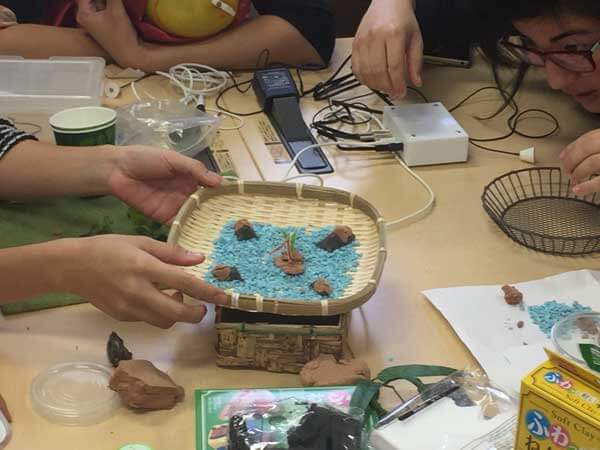
Is there anything that you were surprised about after entering KMD?
Stefanie: European and American universities are tough as they set a large amount of homework. You have to work late into the night every day and then go into class and present your findings. I was surprised by the fact that KMD is completely different. The style at KMD is to learn the concepts and then go on to think about your project by yourself.
Elaine: Because the professors are well-connected in various fields, they will find you a suitable corporate partner for your research. I currently visit a nursing home every week and observe the doctors examining the residents. Securing the cooperation of a corporate partner is what has made this possible.
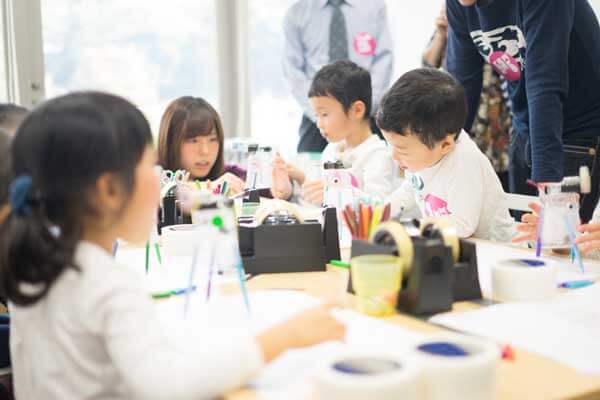
Are there any issues with language?
Elaine: Because I can speak Japanese a little bit, I am able to get by in both daily life and research. However, because it is difficult to communicate with elderly people in Japan who are the focus of my research unless you are proficient in Japanese, I receive help from my corporate partner.
Stefanie: If you cannot speak any Japanese, then perhaps daily life in Japan could prove a little bit of a struggle. If this does happen, we help each other out by going together to the ward office or sharing information such as how to pay the rent.
Yuri: We basically use Japanese and English, but you sometimes have to speak wholly in English when many international students belong to a project. It is really international at KMD as students from all over the world attend and there is always a variety of languages being spoken other than English.
Have there been any events that left a lasting impression?
Yuri: Well of course, there is the KMD Forum. It is both a festival for the students and place to present our research outcomes. The event is managed and promoted by the students. I helped with the preparations over the last six months as a core member. This year is the tenth anniversary of KMD and the forum introduced the journey the school has taken over the last decade. There was a keynote speech by Mr. Tim Brown of IDEO and the event was really lively with over 1,000 visitors. Although the preparations for the event were tough, I received feedback about my research from visitors and it was an opportunity to collect research data from the many people who attended.
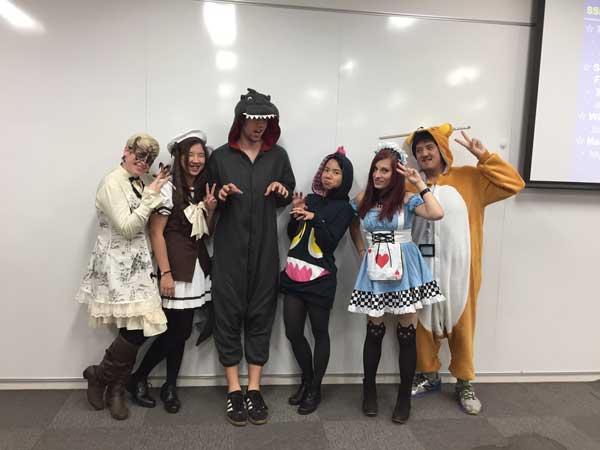
What advice do you have for people thinking about enrolling at KMD at some point?
Stefanie: It is best to decide your research topic as quickly as possible before entering KMD because the two years really do fly by.
Ichika: The first big step is listening to what is said at a KMD information session and thinking “this is for me.” After entering KMD, perhaps the most important thing is being able to express and assert yourself and say “this is what I have done up to now, let’s do something together.”
Haruki: There are many cases where students start new projects together which draw on their activities or internships at places other than KMD.
Yuri: There are a lot of opportunities and possibilities for collaboration at KMD. However, this isn’t something that is just given to you on a plate but is something that you have to go out and take hold of by yourself. Because KMD feels more like a large community than a school, people who do not take the initiative might miss out on these opportunities. Someone who enjoys being proactive will definitely flourish.
What you would like to do from here on out?
Elaine: I enjoy studying, so I would like to continue to pursue my research on various things.
Haruki: I will find work as an engineer at a company in networking and communications. I would like to leverage the community fostered at KMD in order to contribute to society.
Yuri: Next year, I have decided to advance to the doctoral program at KMD to further expand on my current research and develop my expertise while continuing to work as an Education Specialist at the company where I presently work.
Stefanie: I have secured my dream job at a Japanese videogame company. I would like to contribute to worldwide gaming through planning and production in the videogame business.
Ichika: In any case, I want to gain experience in various fields from electronic controls to VR, AI, and blockchains. Drawing on these experiences, I would like to take on the role of connecting people together and to realize my vision of making society just that little bit richer.
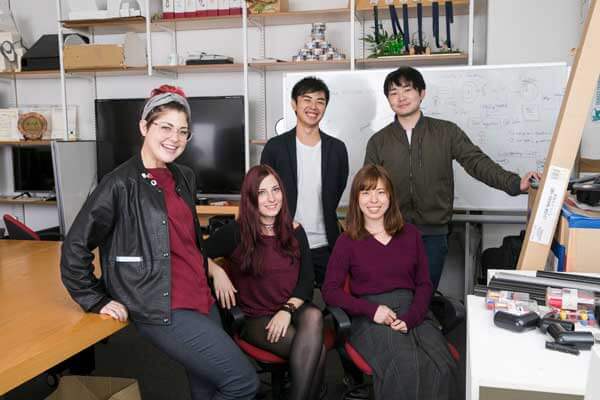
(This interview was held in November 2018)
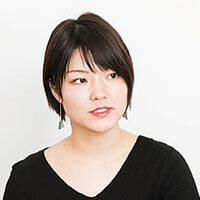
Saeko Higuchi
Japan
Second-year master’s student
Real Project: OIKOS
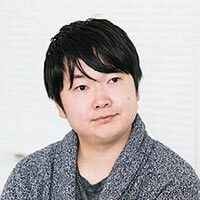
Kengo Hosaka
Japan
Second-year master’s student
Real Project: OIKOS
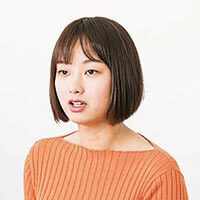
Xinyu Hu
China
Second-year master’s student
Real Project: Global Education
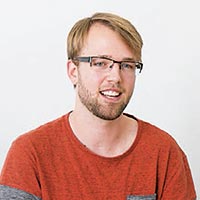
Tanner Person
America
Second-year master’s student
Real project: Embodied Media
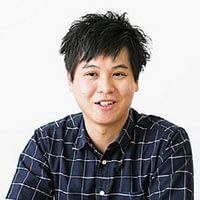
Satoshi Matsuzono
Japan
Second-year master’s student
Real project: Embodied Media
Why did you all decide to enroll at KMD?
Saeko: While at the Faculty of Law, I came across the design thinking of the d.school at Stanford University. As my interest deepened, I realized that I wanted to design useful mechanisms for society and felt that KMD would be the perfect place.
Kengo: Although I studied economics at a university in New Zealand, I was also actively involved in drama and stand-up comedy. I chose KMD as somewhere I could tackle social problems from both the angle of economics and the performing arts.
Xinyu: Since participating in an exchange program at Keio while at an American university, I have wanted to work in Japan. I entered KMD in order to acquire the necessary skills and to learn specialist terminology
Tanner: I studied cognitive science and psychology at University of California, Santa Cruz. I chose to study at KMD because I wanted to learn more about design for virtual reality, as well as to situate myself in an environment and culture I was not familiar with.
Satoshi: I was at a university specializing in engineering and had an opportunity to participate in an internship at KMD. That experience and the sense of fulfillment I had from creating things by considering how design benefits society and who it makes happy motivated me to study at KMD.
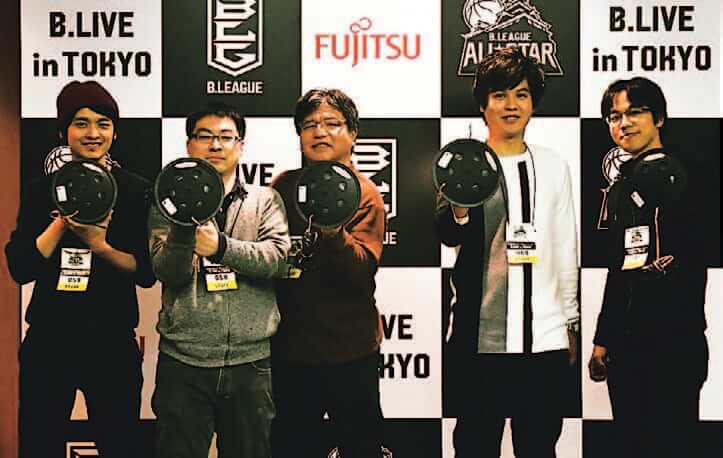
What is life at KMD usually like?
Saeko: Because the required subjects run until October in the first year, every day was group work and discussions. From the Fall Semester, everyone is mainly focused on the Real Projects. I belong to Professor Naohito Okude’s “OIKOS” project. It is hard because I am at the school five days a week for meetings and study groups while also away increasingly often for consultations with companies.
Xinyu: The laboratories vary considerably. I am involved in Professor Keiko Okawa’s “Global Education” project. As we often run workshops for designing educational internships, teamwork is indispensable. I am usually at the university where I can get hold of various people to hear specialist opinions and exchange information.
Tanner: Although I also make use of dedicated facilities like the Project Room at the university, I spend most of my time at Embodied Media’s Haptic Design Lab in Shibuya (laughter). I felt KMD’s “Innovation Pipeline” classes were hectic sometimes. In one of them, I took on a new challenge to build a virtual reality experience using a traditional form of performance art called Poi, and there was also a program tackling difficult corporate issues.
Satoshi: There was also the time I was so busy just before submitting a paper to a conference that I couldn’t go home for a week. Because Associate Professor Kouta Minamizawa’s project bases its activities both at KMD and the National Museum of Emerging Science and Innovation, I go to Odaiba 2-3 days a week. Since this project seeks sociable individuals who are able to work together with business people, there are different stimuli from being at the university.
Have there been any events that left a lasting impression?
Satoshi: The “crash course” camp held immediately after admission for three days and two nights was especially memorable. I quickly learned through this experience to work together with people from different backgrounds in order to create something new. Also, everybody could hold their drink, including the teachers (laughter). It felt like a place where you have to clearly switch on and off as even if everyone drinks until the early hours, courses still start at 9 a.m.
Xinyu: The crash course also aims to shatter the stereotypes held by new entrants. The camp challenges you to overcome obstacles.
Saeko: For me, helping to run the KMD Forum was a great experience. Preparations begin from June for the forum which is held in November. All aspects of this event are built at the hands of students, including its marketing and design. Unless the students take responsibility and get to work, nothing happens. There was such a sense of achievement at being able to collaborate beyond the regular frameworks of the laboratories.
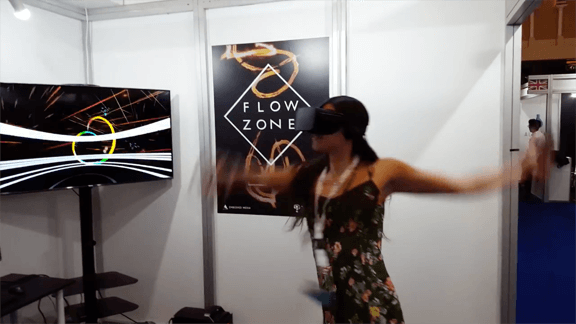
Is there smooth interaction with the international students?
Tanner: When there is a shared goal of carrying out the projects together, I don’t think you feel as much of a language barrier, but I definitely should be studying Japanese more! In any case, there are many instances during the Real Projects where things go well when mixing English and Japanese.
Xinyu: Although I am also an international student, I participated in a design program up to the completion of a prototype at Stanford University after entering KMD. A willingness to cooperate with others is needed wherever you are, not just at KMD.
Saeko: I participated in the GID program for roughly a year, studying design at the Royal College of Art in London and the Pratt Institute in New York for one semester each. The completely different way of progressing with a project compared to Japan was stimulating. Perhaps the best thing about KMD is not only that there are many international students, but that you can experience studying abroad for yourself
Kengo: I took advantage of the CEMS program and went to Canada in the first semester and a business school in Singapore in the second semester for three months each. Interacting with students from thirty-one countries has been a valuable experience as I could grasp my strengths and weaknesses objectively and discern the direction I want to take in the future.
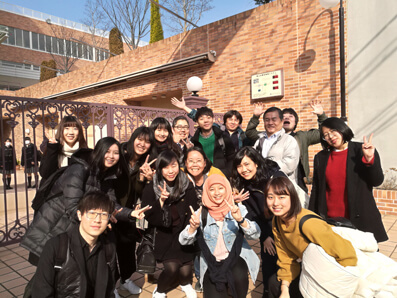
Are there any students who work?
Saeko: I think about ten percent of the students work. There is even a working mother who has started her own business, and compared to other universities I feel there are many such students.
Xinyu: Some people start businesses at KMD, others deepen their specialist research for their thesis, while others still build up their network of contacts for work.
Satoshi: I think people are able to continue their studies even when busy because you can view all of the classes via the video archive. It is very convenient as you can also access past classes. On the other hand, I feel nervous about having my thesis presentation kept on there too (laughter).
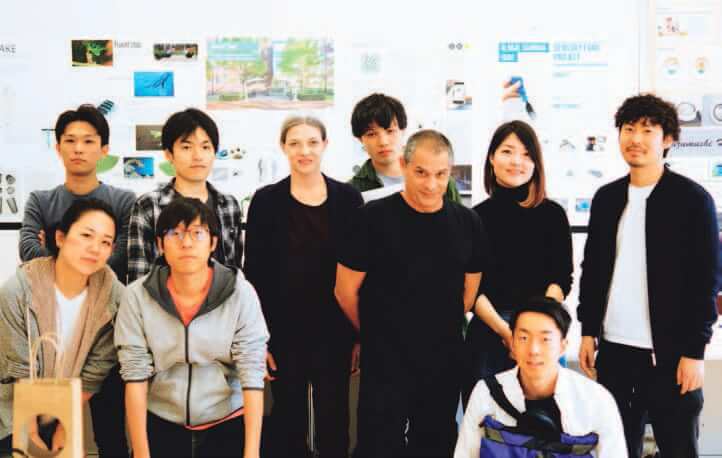
Did you feel any gap between your expectations before and the reality after entering KMD?
Tanner: Because KMD is a graduate school, I had an image of me often doing research alone. Actually though, my communication skills have improved, not only in terms of language but also communication in a business sense, such as the ability to skillfully express my ideas in presentations. Moreover, the tremendous feeling I had being able to realize something I couldn’t achieve on my own through working together with people who each have different talents was greater than I imaged. On a personal level, not only can I use software, but learning to think about hardware as well was also important.
Xinyu: I agree. Before entering KMD I thought it would be a problem not having any design skills. However, I learned it was actually okay to seek help from those around when doing the projects. The students all help each other out.
Satoshi: There are many people here who are highly attentive and everyone is positive.
Saeko: When I first entered KMD I was struck by just how different the way of thinking of some people could be. However, to the extent that what I had considered common sense didn’t apply, I also felt I grew as a person when accepting new values.
What advice do you have for people thinking about applying to KMD?
Saeko: It is important not to be afraid of personal change. I want people to enjoy the experience of changing by not being too rigid in their opinions, coming in to contact with many ideas, and having an interest in them.
Xinyu: Hiyoshi is a fun town and kind to foreigners. I recommend living close to KMD (laughter). As there is a rich variety of scholarships and a medical clinic located in the building, it is ideal for international students. You can also work at any time at KMD, which is open 24 hours a day.
Kengo: New students should think carefully when choosing a Real Project, comparing each one with what it is they want to do. I changed to a project on design thinking after entering KMD, but this was very challenging as it is a field in which I had no previous experience. I think they should decide after learning as much as possible about the ambience of each laboratory.
Finally, what are your dreams for the future?
Saeko: I would like to have an international job that is beneficial for people and society and allows me to make use of my knowledge and skills of system design and innovation through design thinking.
Xinyu: I would like to become a teacher at KMD and carry on workshops developed through global education for the next generation. I will actually join a publishing company from April, but I have a strong desire to return to KMD and continue my research.
Kengo: It’s a bit vague, but I really want to achieve something in life. Whether at the IT company where I am due to work after graduation or in a separate field, I aim to push ahead until satisfied and give it my all.
Tanner: Because I started a company this year in Japan, I will do this job after graduation. Although I might return to the United States to work in the future, wherever I am I want to have international interactions like I do here. My dream is to realize a type of community that has never existed before.
Satoshi: I want to create something new that will be loved around the world. Combining what I have worked on at KMD with my expertise in technology, I want to try and create something that doesn’t exist yet.

(This interview was held in November 2017)

Knives Ian
Russia
Second-year master’s student
Project:PLAY
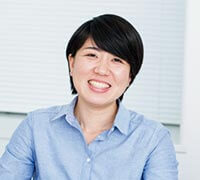
Mai Orikasa
Japan
Second-year master’s student
Project: Superhuman Sports
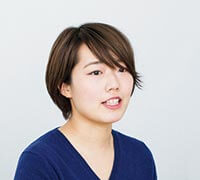
Seina Shimada
Japan
Second-year master’s student
Project:OIKOS
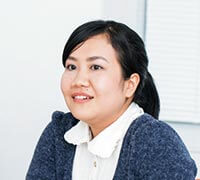
Topoklang Komkid
Thai
Second-year master’s student
Project:Global Education
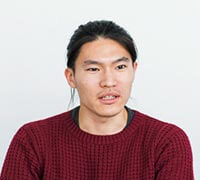
Daisuke Yukita
Japan
Second-year master’s student
Project:Global Education
Tell us why you decided to study at KMD.
Topoklang Komkid: I was studying advertising at a university in Thailand, but I decided to come to KMD because I wanted to build up more practical and creative experience.
Daisuke Yukita: I majored in computer science at the Faculty of Science and Technology of Keio University, where I mainly researched image processing. The experience made me curious about the possibilities of design, so I entered KMD.
Mai Orikasa: I majored in product design in the past and was designing prosthetic legs for athletes, but KMD’s Superhuman Sports Project intrigued me.
Seina Shimada: After majoring in French Literature, I took a job, but I wanted to gain the thought processes and experience that would give me an advantage to survive in the working world, so I became a student once more at KMD.
Ian Knives: I was studying economics in my native country, Russia. After working as a network engineer for about a year and a half in Japan, I began to think I’d like to continue to live here. I decided to study at KMD, where I could balance both technology and business.
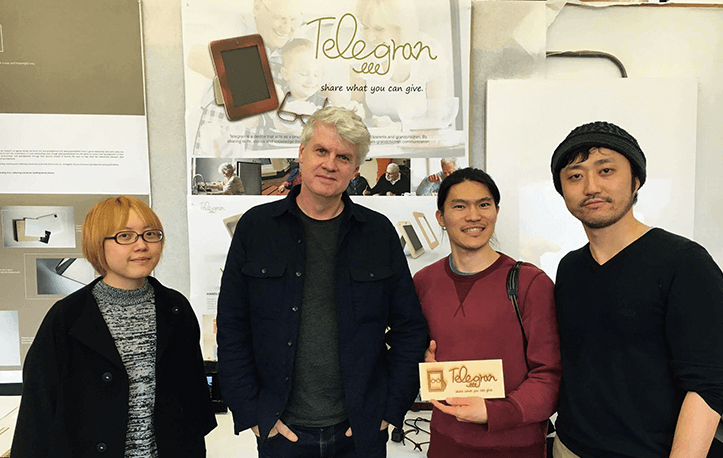
What does a typical day look like?
Seina: The first year and second year are vastly different. In my first year, I arrived on campus in the morning for class. I had to prepare for classes, attend group work meetings, assist the KMD Forum, and work on internship documents for submission, so I stayed on campus quite late. Now in my second year, I have more work and meetings with collaboration partners for Real Projects, so it’s more common for me to be working off campus all day.
Mai: I’m a member of the Superhuman Sports Project, which has a number of bases, so I’m seldom in the same place. I might have a meeting at Professor Ichiya Nakamura’s office or be doing something with people from corporations. For the project with Iwate Prefecture, I visited the site several times. Of course, there are days when I do work at school too.
Daisuke: KMD feels like a place that can be anything according to the situation. Not only is it a university, it feels like home or a playground where exciting things happen. It’s also an office and a studio. I’ll leave the campus, saying, “I’m going to a meeting,” and afterwards, return with an “I’m back.” I chat with classmates on campus as we share a meal (laughs).
Ian: That’s true. When I was involved in a project with just four members, all of us were always on campus and it felt like a family. I have a project with Ericsson, so I have a lot of Skype meetings also.
Any events that were especially memorable?
Ian: An especially memorable event was the IE KMD Venture Day in November 2016. A business school instructor came from Spain and gave a presentation about how to develop just one idea, from a venture perspective. I was able to learn the essential skills for a startup and I am convinced that this experience will be invaluable to me in the future.
Seina: Helping with the operations for the KMD Forum was a lot of work, but a wonderful experience. To spread awareness about KMD, I was in charge of interviewing professors and alumni for an article that I wrote and posted online. The days were extremely tough while I was doing the interviews, transcribing them, and writing the article (laughs). But it was a fantastic opportunity to meet alumni and learning more about the professors.
Mai: KMD Forum is fun because your involvement transcends the borders of different projects. I think the event is very intensive, like an all-star KMD exposition. I helped with design and was involved in the logo and visual design.
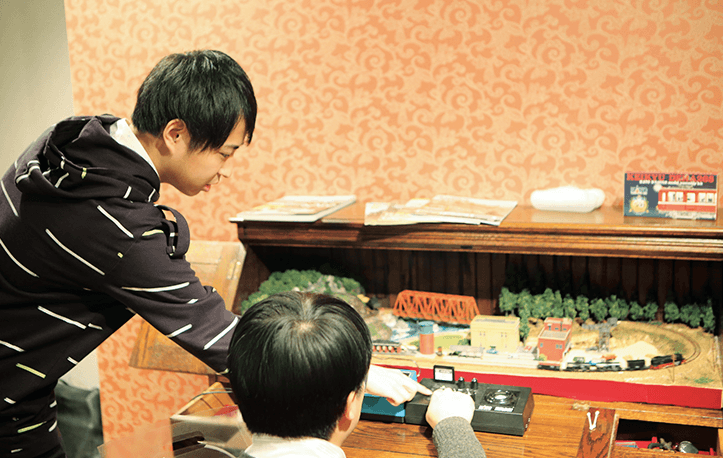
It’s said that about 50% of students are from abroad. Is interaction smooth?
Seina: There is a mood of cooperation that crosses the language barrier with international students. In addition to the international students who start school in September, many CEMS and GID program participants also come to KMD.
Daisuke: Through the GID program, I studied design at the Royal College of Art and at Imperial College in London for four months, and at the Pratt Institute in New York for four months. GID is actually one of the reasons I decided on KMD. There was an option to apply for RCA directly, but being able to attend both was very appealing. Four months after entering KMD, I was able to go abroad and intensively study the essence and meaning of design for eight months.
Komkid: I’m an international student myself, but after entering KMD, I participated in a 4-week design-thinking program that consisted of two weeks at Stanford University in the US and two weeks in Japan. I like that we can earn credits with short-term programs.
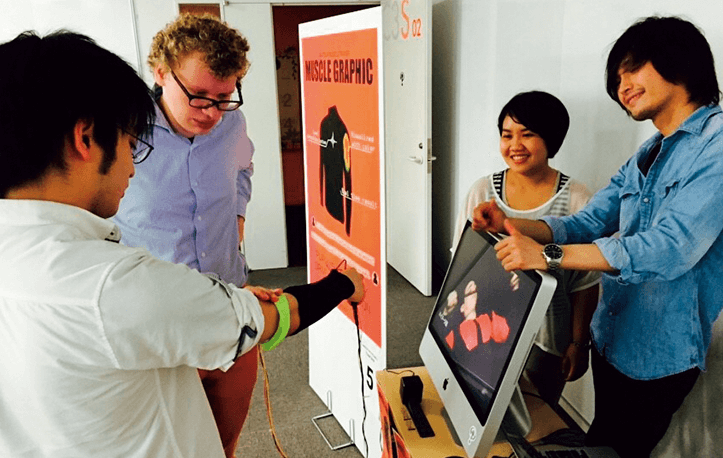
Is anyone a working student?
Ian: I earned as many credits as I could in the first and second trimesters of my first year and then in the third trimester, I was at school three days a week and spent the other days at a startup, building an in-house training system. So, it’s not impossible to work while attending KMD, although I wouldn’t recommend it. I couldn’t take time off, so my stress level went through the roof (laughs).
Seina: During my first year at KMD, I worked as an intern for about six months to help establish an in-house venture at an advertising agency. It was a lot of work, but it was good experience because the business was relevant to my research. I also know a student who attends KMD while working at a publishing company. So, it’s very stimulating.
Daisuke: I think being KMD students makes us uniquely qualified for some types of work. We should all go outside the school to gain experience, it’s useful for research too.
Did anything differ from your expectations before entering KMD?
Komkid: Initially, I thought I might be able to collaborate on other projects, but the reality is that I’m too busy with my own.
Mai: To be honest, I assumed that I would have lots of spare time because it’s a graduate school (laughs). So, I was astonished that the curriculum was packed with classes everyday from the morning, especially the Pipeline programs. The professors are very approachable, and I am delighted that our relationship feels like we are working partners.
Ian: While this obviously depends on the professor, I feel comfortable consulting professors even if they’re not heading my project; they are welcoming, if I am proactive. I also learn a lot from older students. An international student from Hong Kong taught me in depth about design thinking, and this was very helpful.
Seina: There is a rich diversity of career backgrounds and characters. Everyone is heading in a different direction, so group work is sometimes onerous, but this served as training to think about personnel management.
Daisuke: There should be more follow-ups for studio usage and programming. We have full access to the studios for two years, so having the option of undergoing practical training could further enhance this.
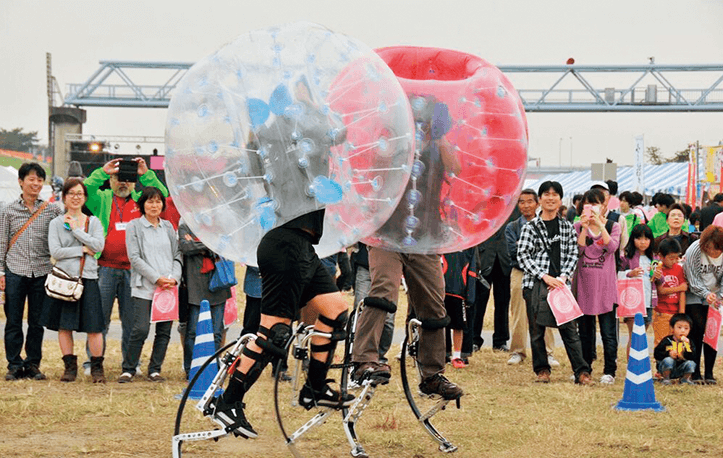
Do you have any advice for people who aspire to attend KMD?
Seina: KMD is a developing graduate school, so things can become fuzzy if you lose sight of your goals. You should enter the school only after you’ve gained a clear sense of purpose.
Ian: KMD offers lots of programs and projects, so if you experience everything once, you should be able to find something. Even if you’re not interested in business, you should start by going through the experience to learn about yourself.
Komkid: I want them to be passionate and embrace all challenges. I had little time to prepare because I entered the school in the spring, so it was very tough with the communication difficulties, but I’m glad I took the leap.
Mai: I’m often told to take action, and not just move my mouth and brain. KMD truly holds meaning only if you contribute to society, so I hope they discover the joy of creating something with their own hands.
Daisuke: That’s right. Everyone should use the studio more!
Finally, please tell us about your dreams for the future.
Komkid: This is really just my ideal, but I’d like to make others and myself happy with the power of education. I hope to provide more enjoyable programs to schools and develop new education.
Ian: I have been hired by information security company and will start in the spring. I will probably become a happy “salaryman” of Japan through work (laughs).
Seina: Regardless of which company I join, or whether I start a business, I hope that my work will continuously offer new value and happiness for people.
Mai: After I graduate, I hope to harness my experience at KMD to address creation culture and community design, working at a job where I can uncover value that has been overlooked and call attention to it.
Daisuke: I would like to create an educational institution like the Hogwarts School of Witchcraft and Wizardry. My time at KMD has been the happiest period in my life, one of its reasons being the absence of paper tests. So, I thought why not create a school that drives the creativity and capabilities of children and evaluates them without using paper tests. I am planning to work at a creative agency after graduation, but I would like to bring this idea to life in the near future.
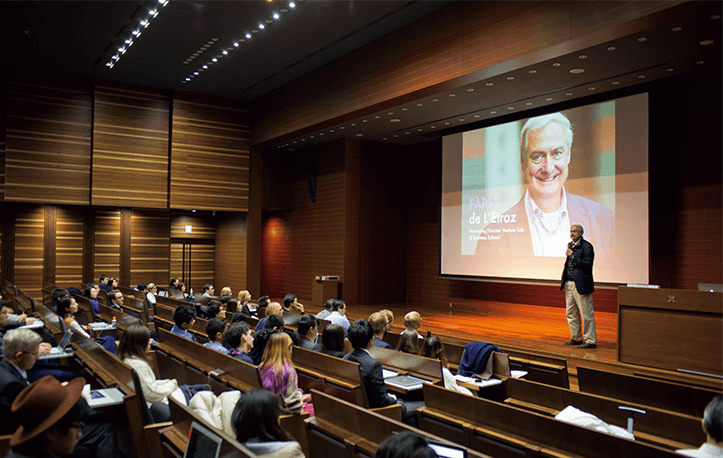
※This interview was held in February 2017.